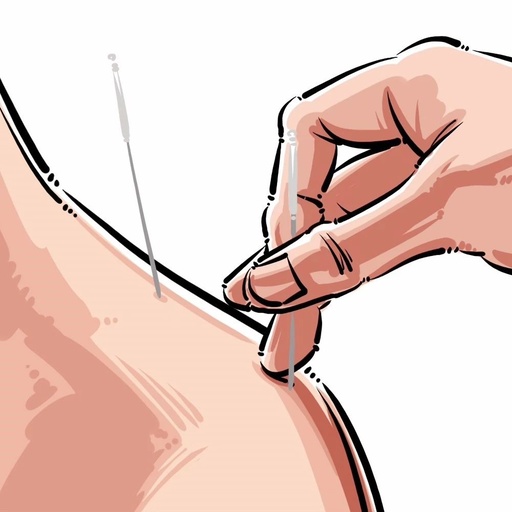Warm Reminder
This section aims to introduce the basic knowledge of acupoints in the human body, providing a fundamental understanding of them and a simple overview of their application in external therapies such as moxibustion, cupping, and guasha. Many acupoints have high risks associated with needling; non-professionals should not attempt needling operations!
Hand Taiyin Lung Meridian
🔹 Meridian Pathway
The Hand Taiyin Lung Meridian originates in the middle jiao, belongs to the lung, connects with the large intestine, and relates to the stomach and lung systems; it emerges from the lung system, with the external pathway starting from the upper side of the chest, running along the inner edge of the upper limb, passing through the wrist (Cunkou), and terminating at the radial side of the thumb. A branch diverges from the back of the wrist, terminating at the radial side of the index finger.

🔹 Indications Overview
This meridian’s acupoints are indicated for cough, asthma, hemoptysis (kā xuè), sore throat, and other lung-related disorders, as well as other conditions along the meridian pathway.
Acupoint of the Hand Taiyin Lung Meridian
🔹 Xiaobai
[Source] From the “Classic of Acupuncture and Moxibustion”: “Xiaobai is located five cun below Tianfu, in the artery of the Hand Taiyin.”�
[Location] On the radial side of the biceps brachii, 4 cun below the anterior axillary fold, or 5 cun above the elbow crease.
[Needling Method] With the arm extended forward, the tip of the nose touching the lateral side of the upper arm is Tianfu point; Xiaobai point is located 1 cun below this point.

[Indications]
1. Cough, asthma, and other lung-related conditions;
2. Dry retching;
3. Pain in the upper arm.
[Applications]
Xiaobai point serves as a conduit for the qi of the Hand Taiyin Meridian, with functions of dispersing lung qi and regulating qi to relieve chest tightness. It treats symptoms such as heart pain, shortness of breath, nausea, and fullness. In modern practice, it is used to treat bronchitis, tachycardia, rheumatic heart disease, upper arm pain, and median nerve pain.
Regularly pressing Xiaobai point with the fingertip for 1-3 minutes on each side has excellent health benefits for the lungs, replenishing lung qi and preventing symptoms of insufficient lung qi, such as rapid heartbeat and anxiety. Many people feel nervous and experience rapid heartbeats during interviews or significant events, which can also be attributed to insufficient lung qi. Pressing Xiaobai point, though a small action, can yield significant effects.
Xiaobai point combined with Quchi point and Jianliao point treats shoulder and arm pain.
Xiaobai point combined with Neiguan point and Tongli point treats angina and chest pain.
Xiaobai point combined with Qimen point, Jianshi point, Daling point, Neiguan point, and Tianquan point treats median nerve pain.
Xiaobai point combined with Qimen point, Jianshi point, Daling point, Neiguan point, and Tianzong point promotes meridian circulation and alleviates pain, primarily treating median nerve pain.
Xiaobai point combined with Shanzhong point, Neiguan point, Zusanli point, and Sanyinjiao point treats palpitations and anxiety.
Xiaobai point combined with Xinshu point, Ge Shu point, and Neiguan point treats chest and back pain.
Xiaobai point combined with Feishu point, Kongzui point, Shizhu point, and Fenglong treats cough and asthma.
Moxibustion with 3-5 cones; or moxibustion with a stick for 5-10 minutes.
[Literature]
“Copper Man Acupuncture Points Atlas”: Treats heart pain, dry retching, and fullness.
“Classic of Acupuncture and Moxibustion”: Heart pain is treated by Xiaobai. Cough, dry retching, and fullness are treated by Xiaobai.
“Shoushi Baoyuan”: Treats red and white sweat spots, hence bleeding from needling is also effective. Moxibustion on Xiaobai point is recommended.
“Great Compendium of Acupuncture”: Main indications are heart pain, shortness of breath, dry retching, and fullness.
*Acupoint images are from the illustrated “Huangdi Neijing” published by Zitu Books.
Cover | Eight Years Old
Editor | Yunshao

